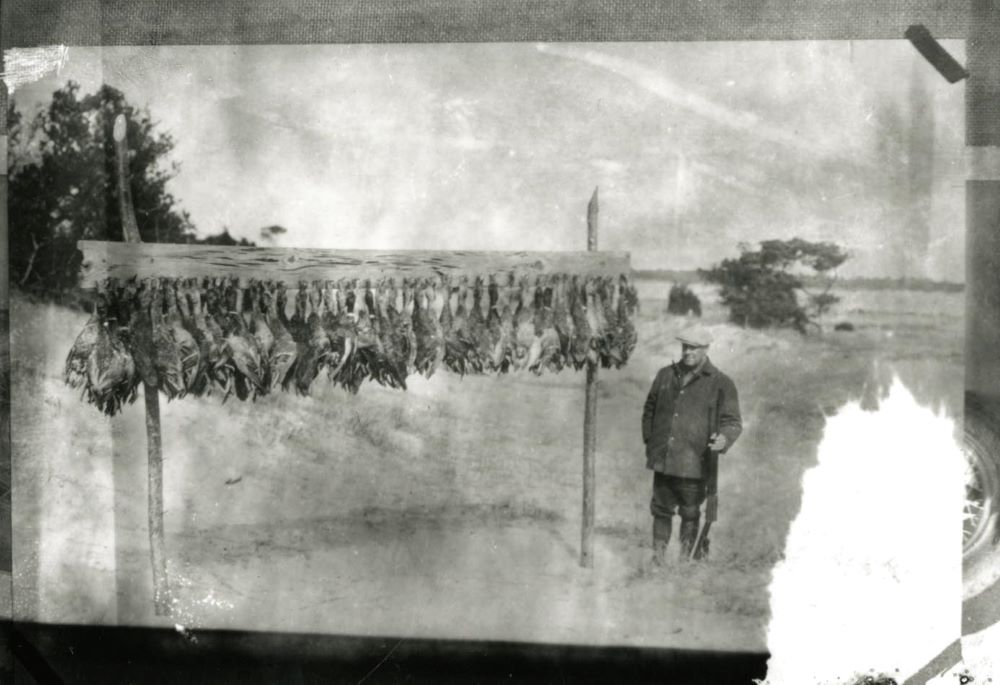Hidden Histories, Historical Marker Resource
Ossabaw Island

This Hidden History was created by SCAD student Anna Robertson as part of her SCAD art history department coursework, with guidance from art history professor Holly Goldstein, Ph.D., in 2021.
The Ossabaw Island historical marker was dedicated in 2003. View the Ossabaw Island historical marker listing.
Gallery
Figure 1: Map of the Sea Islands of Coastal Georgia, 2009, courtesy of the Ossabaw Island Foundation and the Skidaway Institute of Oceanography. https://ossabawisland.org/island/maps/
Figure 2: Map of Ossabaw Island’s Heritage Preserve with emphasis on the ecological diversity of the island’s landscape. Courtesy of the Ossabaw Island Foundation. https://ossabawisland.org/wp-content/uploads/1_Ossabaw-Island-Heritage-Preserve-Map.pdf
Figure 3: 1790 Map of Ossabaw Island, courtesy of the Ossabaw Island Foundation. https://ossabawisland.org/island/history-timeline2/
Figure 4: Indigo cultivation on Ossabaw Island by enslaved people forced into labor by John Morell, courtesy of the Georgia Historical Society, http://neh.ghslearn.com/interactive-case-study/primary-sources/primary-source-2/
Figure 5: Indigo cultivation on Ossabaw Island by enslaved people forced into labor by John Morell, courtesy of the Georgia Historical Society, http://neh.ghslearn.com/interactive-case-study/primary-sources/primary-source-2/
Figure 6: 1855 Map of Middle Place Plantation on Ossabaw Island by William Hughes, courtesy of the Ossabaw Island Foundation. https://ossabawisland.org/island/history-timeline2/
Figure 7: Plantation records kept by George Jones Kollock, who purchased South End Plantation in 1847. Kollock enslaved 71 human beings on the plantation. Courtesy of the Ossabaw Island Foundation https://ossabawisland.org/island/history-timeline2
Figure 8: Photograph of the devastation of the 1881 hurricane on Ossabaw Island. Courtesy of the Ossabaw Island Foundation https://ossabawisland.org/island/history-timeline2/
Figure 9: Anna Robertson, “Breath Study 15, Pin Point Heritage Center, Savannah, GA”, May 2, 2021. Camera faces Burnside and Skidaway Island from the deck of the oyster cannery building.
Figure 10: Hunter posing with game, ducks on, possibly, Ossabaw Island, undated. MS 1360 Foltz Photography Studio photographs. Courtesy of the Georgia Historical Society.
Figure 11: Anna Robertson, “Breath Study 14, Ossabaw Island, GA”, May 2, 2021.
Figure 12: Historical Marker on the north end of Ossabaw Island. Short, young hardwood trees can be seen behind tall trunks of pine. May 2, 2021, photo by Anna Robertson.
Figure 13: Anna Robertson, “Breath Study 12, Ossabaw Island, GA”, May 2, 2021. All images were taken near the North Place Planation location on the Holocene Side of Ossabaw Island.
Figure 14: Anna Robertson, “Breath Study 13, Ossabaw Island, GA”, May 2, 2021.
I became close to the barrier islands of Coastal Georgia and South Carolina early in my undergraduate degree at The Savannah College of Art and Design. For the majority of my time here in Savannah, I traveled up and down the coast of the two states, returning to the islands and photographing them repeatedly. I have stayed long enough to notice the changes to the landscape, some immediate, like beach conservation that occurred along Georgia in 2019 to early 2020, and some gradual, like the steady alteration of the tide on the dunes and beach, and the gradual burial and unearthing of the skeleton trees along the coast. In this class with Dr. Goldstein, I had the opportunity to photograph on Ossabaw Island, a barrier island I had yet to visit, and walk some of the same pathways of the people I have been studying. To immerse myself in the multifaceted history of the island was a privilege, and to give back to the island in some small way was all I could have asked for.
I began my photo series, Breath Studies, in January 2020 during the last year of my bachelor’s degree in photography at SCAD. I began photographing the landscape with an 8x10 and a 4x5 pinhole camera, focusing on the movement of the Earth with the long exposures required of a pinhole camera. In a successful Breath Study, a portion of the photograph will appear blurred from whatever movement occurs, while the solid structures will be in relative focus, to make sure that the composition of the image does not fall apart. This is an incredibly meditative practice; being mindful of the camera and the open shutter, the wind or water that is moving around me, and my own breath. I chose to continue these studies on Ossabaw to spiritually connect myself to the environment I was researching, to sit alone with the land and listen to what it would say.
Alexander, Clark. “Preserving Georgia’s Coastline for Fifty Years,” Conversations on Georgia’s Environmental Histories: Six Part Lecture Series by the Ossabaw Island Foundation. Accessed April 11, 2021. https://vimeo.com/showcase/8121179
“Animals: Ossabaw Island Pigs” Ossabaw Island Foundation. Accessed May 15th 2021. https://ossabawisland.org/island/ossabaw-pigs/
“Ecosystems of Ossabaw Island,” Ossabaw Island Foundation. Accessed April 26th, 2021. https://ossabawisland.org/island/ecosystem/
“Island History: Timeline” Ossabaw Island Foundation. Accessed April 26th, 2021. https://ossabawisland.org/island/history-timeline2/
“OIP and Genesis Projects” Ossabaw Island Foundation, accessed May 16, 2021. https://ossabawisland.org/island/projects/
Leigh, Jack, James Kilgo, Alan Campbell. Ossabaw: Evocations of an Island. University of Georgia Press, Georgia and London, 2004.
“Ossabaw Island, Interactive Case Study: Primary Sources” Georgia Historical Society. Accessed April 20, 2021. http://neh.ghslearn.com/interactive-case-study/primary-sources/
Pearson, Charles, Fred Cook, “The Bead Maker’s Midden: Evidence of Late Prehistoric Shell Bead Production on Ossabaw Island, Georgia.” Southeastern Archaeology, vol. 31, no. 1, Summer 2012, pp. 87-102. https://0-www-jstor-org.library.scad.edu/stable/41620313?pq-origsite=summon&seq=1#metadata_info_tab_contents
Pressly, Paul. On the Rim of the Caribbean: Colonial Georgia and the British Atlantic World. University of Georgia Press, Georgia and London, 2013.
Pressly, Paul. “Why Does the Georgia Coast Matter?” Conversations on Georgia’s Environmental Histories: Six Part Lecture Series by the Ossabaw Island Foundation. Accessed April 11, 2021. https://vimeo.com/showcase/8121179
Robertson, Anna. “Interview on the Ecological History of Ossabaw Island,” interview with Elizabeth DuBose, director of The Ossabaw Island Foundation. April 12, 2021.
Sherr, Evelyn. Marsh Mud and Mummichogs: An Intimate Natural History of Coastal Georgia. University of Georgia Press, Georgia, 2015. https://0-ebookcentral-proquest-com.library.scad.edu/lib/scad-ebooks/reader.action?docID=2008638#
Stutter, Paul, Paul Pressly ed. Coastal Nature Coastal Culture: Environmental Histories of the Georgia Coast. University of Georgia Press, Georgia, 2018.
Take Me to the Water: The Story of Pin Point. Directed by Jeff Bednarz. Savannah, 2011.
